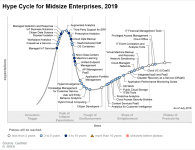

SAP is now hosting IBM’s latest Power Systems servers in its own data centers, as part of its HANA Enterprise Cloud managed offering. The move introduces a new hosting option for enterprises running modern ERP systems with large databases on the Power platform.
That could interest a lot of CIOs: SAP has offered its software on the Power platform since 2005, and ported HANA to the Power architecture in 2015. IBM estimated last year that between 20 percent and 25 percent of HANA workloads then ran on Power, with the rest on servers based on Intel’s architecture.
HANA supports scaling for large databases in two ways: scale-up, on a single server with shared memory; or scale-out, on a cluster of smaller servers with shared storage. The latter requires the data to be partitioned, or broken into parts that fit onto the smaller servers.
IBM touts its E980 servers — the ones SAP is now hosting — as offering the largest scale-up virtualized server for HANA in the industry, at a whopping 24TB. Some Intel-based instances in Microsoft’s Azure cloud can equal that, though. In addition, several companies (including IBM) offer systems with higher headline capacities, but those are scale-out systems.
IBM Power Systems, including its latest processor generation, Power9, are the successors to the fabled AS/400 midrange computers it introduced in 1988. One of Power9’s attractions is that it can still run legacy apps almost unchanged on the IBM i operating system in one logical partition (LPAR) or virtual machine, with another partition running IBM’s AIX flavor of Unix or a Linux distribution such as SUSE Linux Enterprise Server or Red Hat Enterprise Linux.
In theory, then, an enterprise could have a single IBM Power Server running SAP HANA on Linux in one LPAR with legacy apps on IBM i in another. That won’t be possible in the HANA Enterprise Cloud, though, as the IBM Power servers there will only run Linux.
IBM servers built around IBM’s Power9 processors are also available in the IBM Cloud, on Google Cloud Platform and Microsoft Azure (through Skytap, a company that migrates legacy apps to the cloud), but SAP shops will only be able to host their development environments on those.
For production environments, SAP has to certify the cloud, and the only one in which it has certified IBM Power Systems is its own SAP HANA Enterprise Cloud, said IBM Vice President of Offering Management Vicente Moranta.
read more at https://www.cio.com by Peter Sayer
Cio









